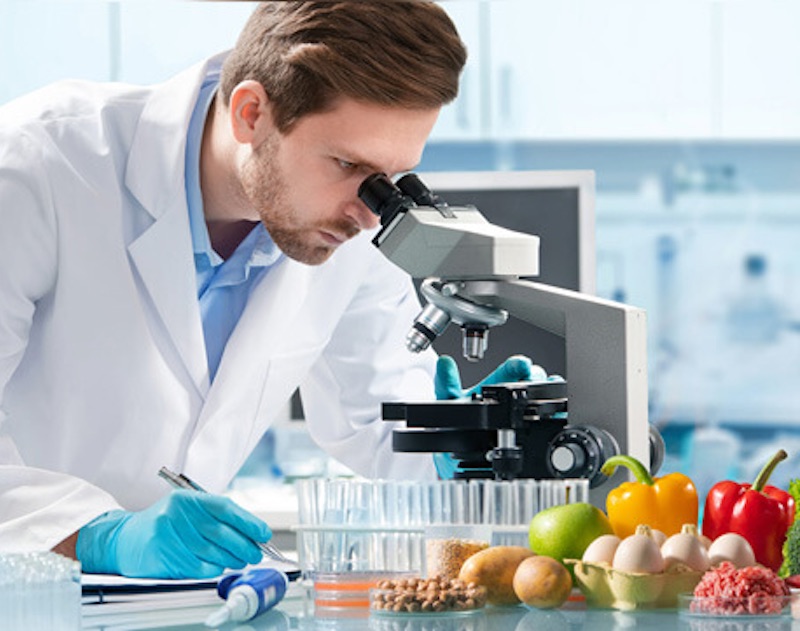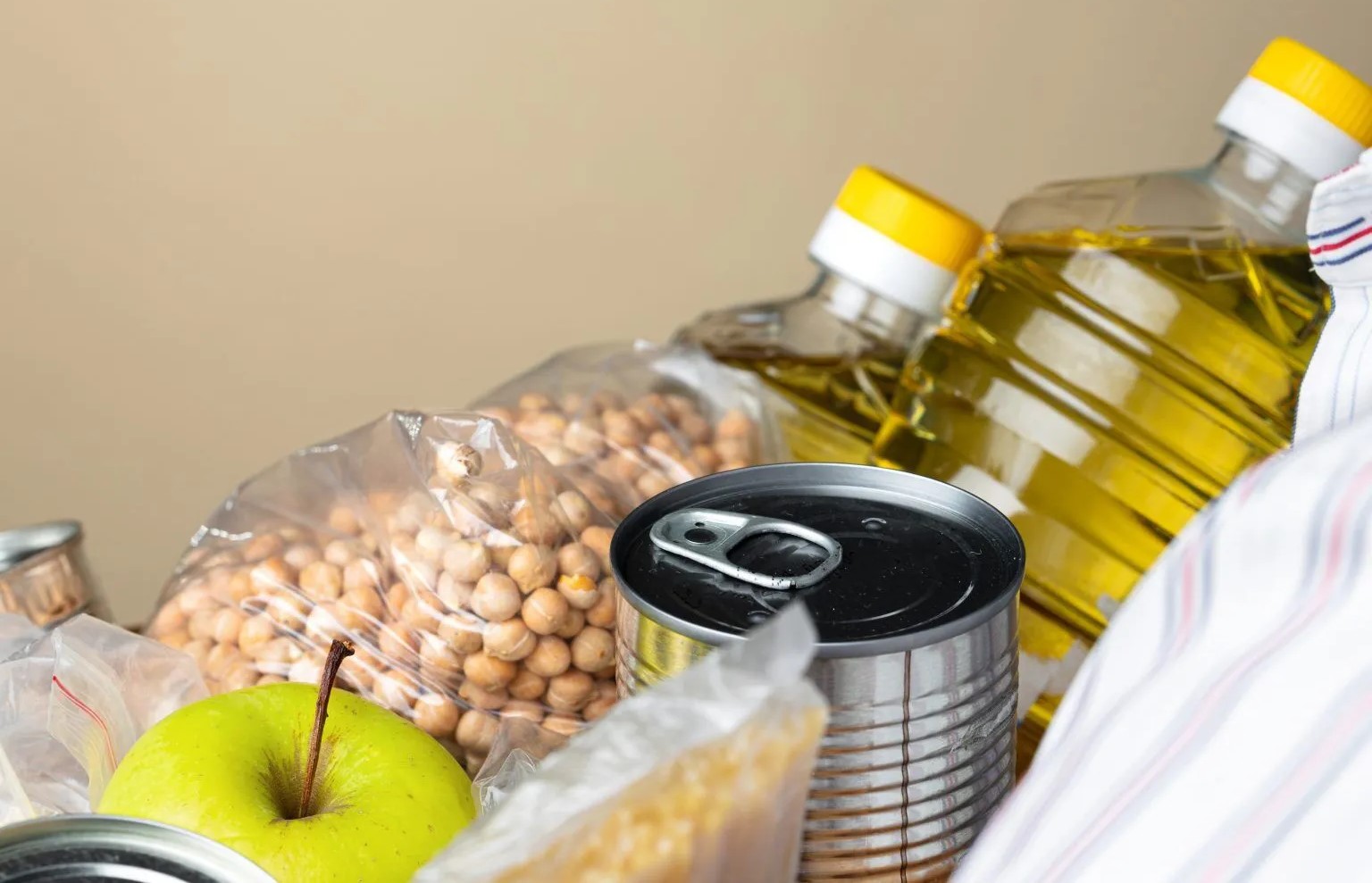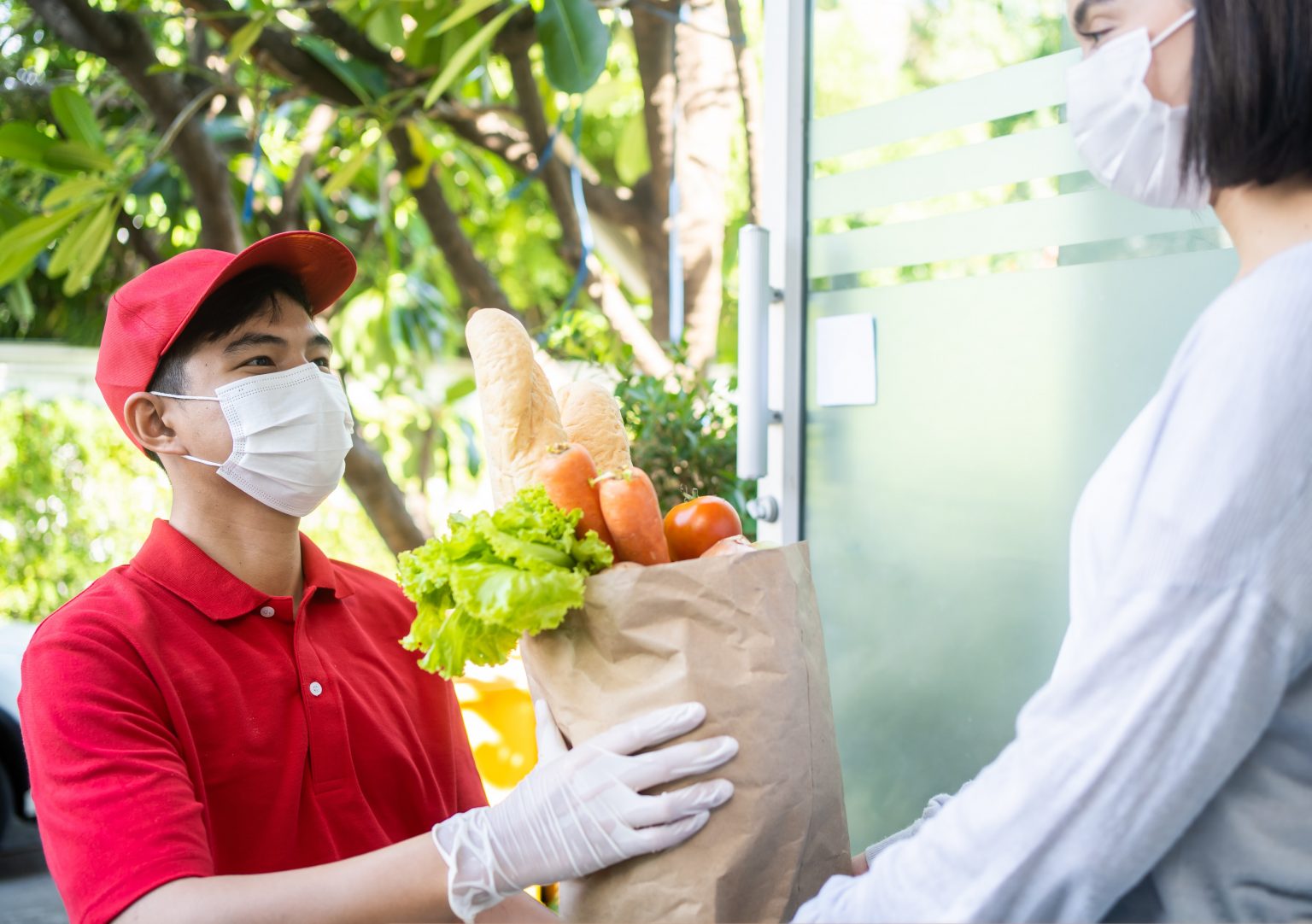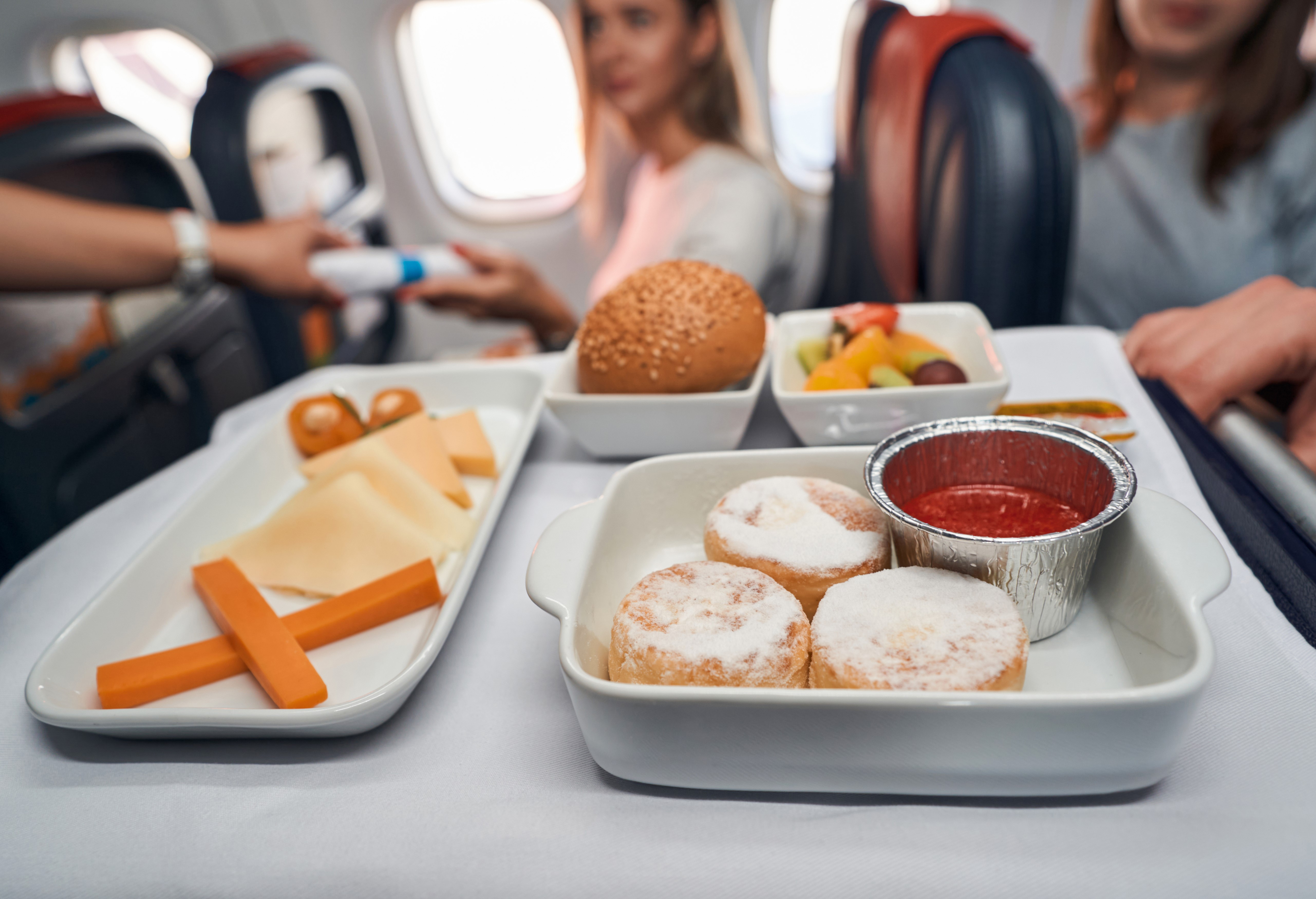Last Updated on November 8, 2024 by Admin
Table of Content
- Guide to Food Safety and Sanitation in Manufacturing and Retail Sector
- Food safety in manufacturing
- HACCP AND GMP
- HACCP
- HACCP + Other Programs for Solid Food Safety – GMP
- Food safety for retail stores
- Food safety and sanitation guidelines during the Covid 19 pandemic
Foodborne diseases’ impact on public health and medical expenses is highly distressing. According to WHO, illnesses caused by unsafe consumption of foods affect 600 million people and cause 420000 preventable deaths annually, leading to a massive loss of 33 million healthy life years.
Foods travel through different stages of production cycles, including harvesting in its raw form, transportation to a manufacturing facility, preparation, processing, packaging, storing, again transportation to markets, before being cooked and finally consumed. Food products can catch contamination at any stage of the food chain.
Useful Resources: Online Allergen Training | Food Auditor Course In India | Food Defense Training
Guide to Food Safety and Sanitation in Manufacturing and Retail Sector
It is essential to note that contaminated foods may not necessarily look bad, taste or smell bad. Only microbiological testing may help identify the existing pathogenic microorganisms. Therefore, every food business should have well-defined systems and resources, implementation strategies, and execution processes to eliminate the possibility of foods getting contaminated.
A foodborne illness incident can negatively impact a business – from damaging reputation, pricey product recalls, lawsuits and legal actions to business closure. In simple words, every food business should proactively work towards protecting the health of its customers.
Food safety in manufacturing
In manufacturing, food safety refers to steps involved in safely manufacturing, packaging, storing, and transporting food items following all guidelines as the law demands. The aim is to effectively address safety-related aspects of food production and the supply chain.
HACCP AND GMP
Regarding food safety guidelines, food safety and sanitation guidelines, most of the laws covering it globally are based on two essential concepts, namely HACCP and GMP. HACCP is short for Hazard Analysis and Control Points, and GMP means Good Manufacturing Process. But before we talk about these concepts, it is essential to understand what different types of food contamination are.
Generally speaking, food contamination could be physical, chemical or biological.
Biological contamination refers to harmful and disease-causing pathogens in foods, like microorganisms, viruses, bacteria, mould, fungi, parasites etc. The pathogens enter food products and multiply to unsafe levels.
Physical contamination can happen at any stage of food production. It occurs when a foreign or unsafe object contaminates foods. These could be hair, steel wool, nail, bandage, pieces of plastic etc., to name a few. These objects can carry biological contaminants and pose choking hazards if consumed. Even if it is spotted before consumption, the experience of seeing it is very upsetting and distressing.
Chemical contamination refers to any form of chemical contaminating foods. It can be hard to control and lead to fatalities and long-term health conditions. Common examples of chemical contaminants include cleaning products, pesticide/herbicide, naturally occurring toxins, heavy metals, antibiotics etc.
Read Also – HACCP Training Course
HACCP
HACCP is an internationally-recognized system for controlling and preventing the risk of safety hazards in foods. The HACCP is a risk-based, systematic concept geared towards countering health hazards by identifying potential food safety issues before they occur. It requires that potential risks are spotted and controlled at specific points in the food cycle process. No matter what a company does in a food business – whether it is manufacturing, processing or transporting foods – it can use HACCP to ensure the highest quality of safety standards are met in its work.
HACCP Principles : HACCP is based on seven principles
-
Conduct a hazard analysis
It includes steps to identify where potential hazards can occur. A business must have adequate resources, tools, and a team of experts to efficiently evaluate the hazards or take external help. Hazard analysis can consist of two steps: identifying hazards and evaluating hazards. The later includes determining the degree of risk to the user from the hazard that has been identified.
-
Identify Critical Control Points
Short for CCP, Critical Control Points refer to a step in which control can be applied. A potential food safety hazard can be prevented, eliminated or reduced to a certain level that it will not pose any risk.
-
Establish critical limits
A CL or Critical Limit refers to the maximum/minimum value to which parameters like physical, chemical or biological must be controlled. If the limit is ever changed, corrective action must be taken.
-
Monitor CCP
A monitoring procedure should clearly describe how the measurement will be taken, when it will be taken, and by whom. It should specify how frequently it is to be taken.
-
Establish corrective action
It refers to understanding what actions have to be taken in case a critical limit is not met and what steps are needed to correct the process to prevent such incidents.
-
Verification
It refers to validating the HACCP plan, ensuring that it is effective and working accordingly to prevent the hazards identified. Conduct regular verification of the system to check the health of the plan, measure and monitor equipment, corrective actions etc., to name a few.
-
Recordkeeping
Keeping a proper HACCP record is essential to the success of any HACCP plan. The record should have information of the HACCP team, description of the product, hazard analysis, flow diagrams, verification procedures etc., to name a few.
Read Also – 7 principles of HACCP – Detailed guidance
HACCP + Other Programs for Solid Food Safety – GMP
HACCP is a part of the overall safety process. It must be supported by other food safety guidelines, food safety and sanitation guidelines and programs. GMP or Good Manufacturing Practices refer to internationally recognized quality assurance guidelines. These practices support the HACCP plan. It refers to a system that ensures that the products are regularly produced and controlled based on quality standards. It can cover all aspects of production including materials, premises, personal hygiene of staff etc., to name a few. The ultimate goal is to produce safe products and protect consumers from purchasing unsafe and poor quality products.
Food safety processes in manufacturing
We have outlined the core points above regarding food safety guidelines and food safety and sanitation guidelines in manufacturing. Generally speaking, it involves having expert tools, resources and dedicated staff to identify potential safety issues and prevent them before they occur. Every business in the manufacturing sector must ensure its products are safer for the end consumer. For that, they must prepare effective strategies, execute the strategy and regularly monitor and improve the existing processes to consistently produce safe, high-quality foods.
Businesses operating in the food industry must read, understand, follow and comply with all prevailing safety regulations.
Here are some of the ways a business can ensure that their products are safe –
-
Location
Businesses must set up their plants in safe locations. And the locations should continue to support their effort to meet all safety requirements. Areas prone to pollution hazards and pest attacks must be avoided. Materials that are used for the internal structure of the facility must be durable restrict the accumulation of dirt and dust. They should be easy to clean and safe for staff members.
-
Machinery and equipment
Machines used in the production facility and production line design should support the cleaning and maintenance efforts. Badly-designed machines will allow dirt and dust to accumulate, making them impossible to clean.
-
Regular maintenance and monitoring
Only strict design principles and pest, pollution, sanitation and other control measures are not enough. The facility must be thoroughly checked, inspected, cleaned and sealed to keep them safe and hygienic.
-
Waste management
Waste management is another essential thing every business must take seriously. They must develop strict strategies and follow effective processes to store and dispose of the waste following all legal guidelines. Adequate steps must be taken to eliminate the scope of accidental environmental contamination.
-
Personal hygiene
Viruses and bacteria can travel from one place to another quickly. Businesses must take proper measures to facilitate high-quality personal hygiene practices. They should educate their staff on food security practices, including hand hygiene, safe food storage practices, safe food handling practices, cleaning and pest control, protective clothing, illness reporting etc. Also, they must take proper measures to safely handle, store and transport products from one location to another.
Managing Employee Health (Including Contracted Workers)
Food businesses must ensure that everyone concerned with the business (including permanent and contracted workers, cleaners, maintenance staff, office staff, food handlers, young and new workers and others) have the right information, instruction, task-based food safety training, and expert supervision to ensure that the activities are performed safely.
Several effective steps can be taken towards making food production safe. This may include restricting the entry of people who are not food handlers from core food handling areas, taking steps to ensure that food handlers are using the right protective equipment and maintaining hygiene to keep foods safe, to stop people from spitting and smoking, eating etc., in food preparation areas. Food handlers who are sick should report immediately, and they must not resume the food handling operation until medical advice confirms they are not suffering from any foodborne diseases. Businesses must set up the right working environment for their staff to work safely. All possibilities of a foreign object entering the food products at any of the processing stages should be prevented. Workers should wear gloves and follow all safety guidelines.
These are just some of the ways to ensure food safety for food retail stores and Food Business Operators. Food operators must follow all legal requirements, implement all the steps needed to produce safe foods, regularly monitor their efforts and continuously improve. They must follow all FSSAI guidelines, meet all the criteria of production and processing, and prevent the likelihood of any issue affecting food processing. FSSAI (Food Safety and Standards Authority of India (FSSAI) works to protect, promote and safeguard public health through the regulation and supervision of the safety standards of foods.
Food safety for retail stores
- Large self-service grocery stores such as supermarkets should follow proper guidelines to keep, store, sell their products. The facility environment should be clean and hygienic.
- Separate storage, processing and packing areas should exist along with loading and unloading areas .that are protected from harsh weather conditions and pests.
- Handling, storage and other essential areas should have sufficient drainage, power back-up, temperature control, cleaning systems in place. Every product should be kept, stored and sold following all legal requirements. They should have proper staff facilities, including toilet and handwashing systems. Water should be of portable quality.
- Adequate steps must be taken for safe collection, storage and disposal of waste. Vehicles used to transport products must be clean, safe and free of pests. Regular cleaning and maintenance must be done across the facility. All employees must be trained in food safety and its best practices. They must be upskilled from time to time.
The key obligations of food operators
-
Personal Hygiene for Employees
Employees must maintain good personal hygiene. This may include wearing clean clothes, keeping nails clean, preventing bad breath, maintaining proper dental hygiene, washing hands after using toilets, keeping work areas clean, and following all the guidelines shared by concerned authorities. In this regard, businesses must have adequate training programs in place. We have covered other aspects of personal hygiene above.
-
Food safety management and hygiene practices
Following food safety guidelines is highly crucial. It is the responsibility of every food business operator to fully understand the existing laws and work towards making their process and production entirely safe across all stages. For the latest and more specific and comprehensive insights on food safety guidelines and regulations, please visit the official website of FSSAI here.
Food safety and sanitation guidelines during the Covid 19 pandemic
Currently, there is no evidence supporting the transmission of COVID-19 associated with food Source, But as more research is conducted on the virus, we may gather more insights about it. Therefore, it is essential not to avoid any probabilities and accordingly formulate practical steps, including maintaining food hygiene and good food practices to prevent the transmission of the virus through foods.
It may include strictly following social distancing protocols, limiting social contact, detecting/isolating the infected person from food handling operations. The use of the Aargoya Setu application can also help to stop the spread of the virus. To learn more on food hygiene and safety guidelines for food business during the Covid 19 pandemic, please visit the resource from FSSAI.
Are you looking to access affordably-priced and industry-relevant food processing courses and resources, food safety training etc.? Then, please visit this page now!













